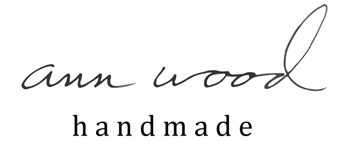
All your precise cutting and careful sewing are lost without thoughtful stuffing. Songbirds are a great example of how stuffing can take your project from OK to magnificent. The birds need to be firmly stuffed to fully express all their curves and have “birdness”. The birds below were hand stitched using the songbird sewing pattern. I’ve got 7 tips to help make your birds or any 3 dimensional sewing projects awesome.

1. A well stuffed creature starts with preparing the seams before you turn it right side out. Clip little triangle sections out of the seam allowance around the curves. Be careful not to cut the seams.

2. Turn your bird right side out. Take the wider end of a chopstick and run it firmly along the inside of the seams. It gives you a head start on pushing those curves all the way out. I learned this trick from a student at a workshop and use it all the time. It’s especially helpful on small curved seams that you can’t easily press open.
3. Use great stuffing. I only use wool. It makes a firm shape, I find it easier to work with than poly fill and you can fine tune the shape – more on that later. Find it in my shop.

4. Take your time. I spend a huge amount of time stuffing my birds and other creatures. Add a little at a time. Start by pushing the stuffing all the way to the head. Adding too much at once makes it harder to completely fill the shape. Keep adding stuffing until the bird body feels and looks full and round.

5. Close your eyes. Run your fingers gently over the surface and feel for empty spots or lumps. Your fingers will pick up things your eyes won’t.

6. Adjust from the outside. Use a large needle to fine tune the shape, move little bits of stuffing around inside the bird. You can get stuffing into or out of little spots that would be impossible to get to from the inside.

7. When you’re ready to close stitch part way and then add a little more stuffing (songbirds get temporarily closed at this point in their process so I’m basting).






I get bored with clipping and notching my SAs, so I like to use pinking shears for that step!
I also like to use wool for stuffing things because it’s better for the environment.
As a side note: It amuses me how much cats like to attack things made of wool. If I’m making a cat toy, and if the friends I make them for don’t have dogs, I’ll also add honeysuckle shavings to the stuffing as some cats prefer it to catnip!
What a great idea! But I’ve never heard of honeysuckle shavings? I know what the plant is, but how does one shave a honeysuckle?
I’ve had very good success stuffing with wool fabric. I cut it into very small pieces. I only use 100% wool fabric.
I have a fine mist spray bottle filled with water, I spray the entire object after the stuffing process , wetting the fabric only, not the stuffing, then let it dry. As it dries, it shrinks the fabric slightly, making the seams smooth and pucker free.
I do have a comment. I use a new long wooden pencil and stuff with the eraser end. It guides the stuffing in tight places especially if it a long narrow arm or leg. Works well to distribute a smooth even effect. Love your work Ann. Thanks for sharing.
These are some great tips! I learned a lot with my first cup of coffee this morning! Thanks ladies!
Me, too! Only, I must confess, it my second cup of coffee!
My memory is a bit fugitive at the moment, but I thought I saw something here or there about using those tiny plastic pellets to stuff a critter with as it lends a weight to it that allows it to sit on a stable flat bottom.
By any chance, can one use both pellets AND wool? It would certainly save money on using wool only. Any thoughts?
I like to make teddybears, and I use wool combined with plastic pellets, when I stuff. That means, that the bear get’s some weight too. If i want to use a lot of pellets to gain weight, I sew the pellets into a small cotton bag, which i place in the stomach of the bear and then stuff the wool around.
I think it’s difficult to use pellets in stuffing a bird, because most birds have to balance on feet and therefore must not be too heavy.
Thank you Ann for your suggestions on stuffing. I bought your pattern and have made a few birds but not good enough yet – I think the stuffing idea is excellent and will undo some of the birds to add more stuffing to them. They might improve – I can’t wait for you to share the rest of feathers and such.
I once bought a special stuffing tool ( a bit like a screw driver with a notch in the end) when I went to a doll-making workshop at a craft show in Australia. It is my most treasured possession! I don’t know how I’d manage without it while making many little fabric friends as it enables me to get the stuffing just where I want it without pushing it into a solid ball. I agree, push out the seams both before and after stuffing to stop wrinkles and I prefer to use wool stuffing too. I also use a needle for fine tuning and a few gentle squeezes to finish.
These are helpful tips. I enjoy the stuffing process that takes me from ‘this is never going to work’ to a finished creature. I always admire your fabrics. Linen remnants are hard to find in thrift stores or off the shelf here in NZ these days.
Sally
Have a look for linen garments instead of fabric remnants , there is an awful lot of fabric in a long linen skirt that you could reuse instead xxx
you can make pouches to put the pellits in and bury them inside whatever you are stuffing by filling in with your stuffing around the pouch. I enjoy your newsletter. thankyou for what you do.
I get a great deal of joy in stuffing little creatures or animals made for my grand daughter to tuck in her pocket. Or just have something from Gramma to remember that I love her and am thinking of her always.
My Mom was big on sachets and I have even made little creatures and tucked a bit of good smelling Lavender to help relax me when I cuddle them!
I really enjoy your comments and find it relaxing to read and hear you speak in my mind.
I so enjoy your free patterns too. I make the little trousers and clothes in the hopes Marley will play dress up with some of the critters I have made for her!
Thanks for all the freebee’s!
Elizabeth Fischer
Lisa pay on her you tube -pay it forward- uses a felting needle to tighten up her stuffing before closing
One more tip I learned from a YouTube video – take a wooden stuffing stick (or chop stick) and break one end – use the broken end to push your stuffing in – the jagged edge Was will grab the stuffing and make it easier to place,.
Love your blog and your patterns!!
I also use craft tweezers for the tiny corners as sometimes nothing else will work
I’m allergic to wool, so I use the cotton that comes in the top of vitamin bottles to stuff my little Yorkshire buttons. It pulls apart easily and I can add the orts from my quilting and tatting to the center of the stuffing.
I use it since I’ve discover it (can’t remember where unfortunately) and it’s a reel game changer: an old brush, stiff. Like first brushes for kids or brushes for stencils.
It push the fill and the fill stays in place when you go back. A huge gain of time, precision and nerves!
Have a nice day.. Or tea.. Or coffee.
This came at just the right time. I’m still pretty new to sewing and am in the phase where I don’t have enough knowledge to know whether it’s my stitching, my pattern or my stuffing (or some other unknown force) that’s to blame when things are looking off.